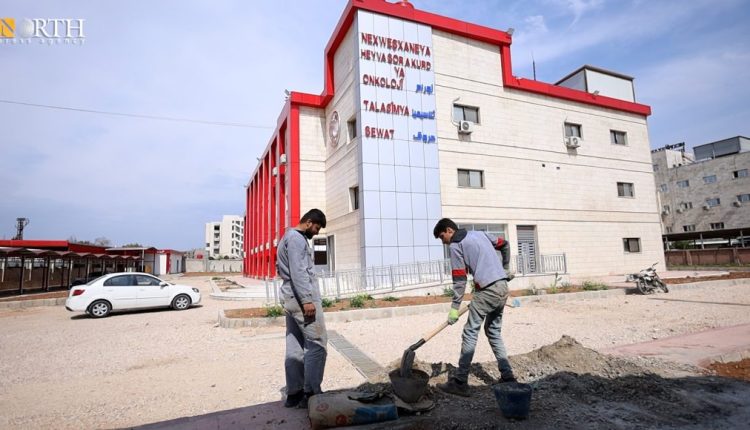Northeast Syria witnessed deteriorating healthcare services during the Syrian conflict due to the destruction inflicted to health infrastructure, especially in Raqqa, Manbij, Deir ez-Zor, which already lacked healthcare prior to the conflict.
Experts and officials highlight the stages the healthcare sector went through during the Syrian conflict, the challenges the efforts made for the progress and improvement of medical services in areas run by the Autonomous Administration of North and East Syria (AANES).
Revival
Kassar Ali, a doctor and researcher in healthcare management, says 75 percent of healthcare facilities in Northeast Syria were destroyed in battles between various parties to the conflict in Syria.
Ali adds that before the war, quantity overshadowed quality in healthcare. Even though there were many health centers and hospitals, but the services were limited, according to Ali.
He told North Press that after 2017, the healthcare system shifted to mainly providing an emergency services and address injuries and diseases caused by the war.
Although healthcare facilities in Hasakah Governorate, northeast Syria, did not sustain damage, they were under heavy pressure for years.
In 2019, the healthcare system began to recover as private hospitals were established and doctors started working in affected areas.
After 2020, secondary healthcare emerged and was activated, including surgeries and specialized children’s hospitals. The healthcare sector is currently being assessed amidst funding and staff shortages to transition to stability and early recovery phase in order to meet the needs of the population.
Inadequate efforts
Ali believes that the AANES provided good healthcare, but there are still shortcomings in relation to medical specialties and services. The AANES hopes to guide the healthcare sector and assist in its development to fulfill the people’s needs, according to Ali.
He points out that medical and relief organizations have contributed to establishing health centers and hospitals, providing a “strong support” in expertise and funding to the AANES.
However, Rojin Ahmad, deputy co-chair in the AANES’ Health Board in Hasakah, disagrees with Ali saying that international organizations do not directly deal with the AANES. She adds there is an inequality in the distribution of medical aid, as it is directed to affected areas, whereas Northeast Syria is excluded.
Ahmad points out that after the recent Turkish attacks on infrastructure and healthcare facilities, the AANES did not receive any support from humanitarian organizations.
The kidney dialysis center and oxygen plant facility that supplied all hospitals in the city and countryside of Qamishli, northeastern Syria, were completely put out of service due to the Turkish airstrikes that took place in late December 2023.
The official said that humanitarian organizations contributed to a partial improvement in healthcare but caused harm by attracting medical staff with incentives, leading to a shortage of staff in the public sector.
Challenges
The medical sector in Northeast Syria faces challenges like immigration of medical staff, lack of specialized pharmaceutical factories, and the current situation of the region.
The AANES aims to address staff shortages in healthcare by relying on locally trained medicine graduates from universities run by the AANES.
Ali also stresses that the closure of the al-Ya’rubiyah (Tel Kocher) border crossing is one of the main obstacles that the healthcare sector faces. She appeals for the reopening of the border crossing to improve the healthcare situation in the area.
Al-Ya’rubiyah (Tel Kocher) border crossing on the Syrian- Iraqi border was the most important between the two countries prior to the Syrian conflict in 2011. It was closed in 2020 after a Russian-Chinese veto in the U.N. Security Council, blocking Northeast Syria access to international humanitarian aid.
AANES officials state that opening the border crossing will help facilitate the passage of humanitarian aid to areas run by the AANES, ensuring the stability of the region. Ali further adds they are working to transition from the emergency phase to the stabilization phase and supporting the medical sector, by increasing competent centers, supporting hospitals, increasing medical staff, and monitoring the private sector

